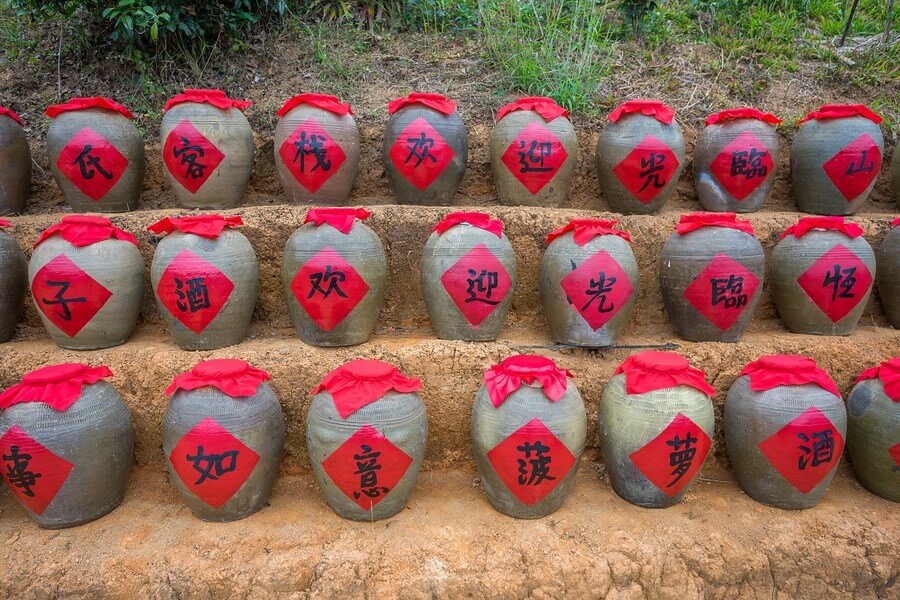Organically produced, Japanese rice wine holds an amazing history. The traditional liquid is drunk, utilized as a condiment, or cooked in dishes.

Share this article
Usually alcoholic, the traditional wine is produced from fermented rice. Generally produced using traditional methods, rice wine is mainly consumed in Asia, especially Japan. With an alcoholic content of up to 18%, rice wine is often stronger than western grape-based counterparts. Rice wine possesses different names based on region and country of production. For example, the Japanese call rice wine Sake, while the Chinese call it Huang Jiu. It is known as Tapuy in the Philippines, and Cheongju in Korean. Asian rice wines are an integral part of many cultures, in the same way grape wine dominates European culture.
Rice wine was first brewed in Japan roughly 2000 years ago. It is an important part of the Japanese culture and heritage. Traditionally, rice wine has been dubbed the drink of the Gods. For example, Rice wine had many purposes in the Shinto religion. For one, rice wine has been used as a food offering. The Japanese drink rice wine casually, or at festivals. Japanese rice wine also has ceremonial uses in Japanese weddings in a process called “Sansankudo.”
Japanese rice wine has always been more popular than sweeter offerings such as Japanese plum wine!
Origins Of Japanese Rice Wine:
The origins of Japanese wine rice making date back to the beginning of wet rice cultivation in Japan. The first written evidence of sake dates back to the 3rd century. At this time, rice wine production remained exclusive to the imperial court and religious shrines. In the 12th century, rice wine brewing became popular across Kyushu, spreading to the rest of the country. Rice wine production remained primitive. The chewing of boiled rice for example. Enzymes present in human saliva assist in converting starches to sugar. Afterwards, the rice undergoes fermentation with the help of yeast.
The first written evidence of sake dates back to the 3rd century.
Mass Production:
Rice wine production began as a small scale operation, individual in nature. However, the beautiful product slowly became produced on a large scale. Nada became a hub for rice wine production. Despite the increase in production of rice wine, it was only affordable to people of high nobility. As time passed, rice wine had the same economic importance as rice. It became Japan’s most important drink. Breweries made more money as it was being drank every day and not only on special occasions. This led to the fast track in the development of the rice wine brewing technology in Kyoto. Becoming completed after the end of the 16th century.
Production processes improved during the seventeenth century. Rice wine breweries popped up all over the country. At this time, the different types of rice wine produced across the country were cloudy until a brewery worker suggested the use of ashes to settle the suspended particles present in the wine. His employer was angry when it was discovered that ashes were used and he tried to destroy that batch of rice wine. The actions of the brewery worker were later recognized as it helped to refine the wine and made him a legend in the history of Japan. The industrial revolution that later happened in the nineteenth century, brought about the use of machinery in the brewing industry. This increased production exponentially, making rice wine more affordable and readily available.
Modern Day Japanese Rice Wine:
The production of rice wine hit its peak in 1973. Afterwards, consumption began to decline. In 2011, the consumption of rice wine went down by almost 65 percent. This also affected the number of rice wine breweries which declined from 4021 in 1955 to 1684 in 2012. The export volume of rice wine is also on the rise. It doubled from 2003 to 2013. Its export value also tripled from 39 billion yen in 2003 to 105 billion yen in 2013 in Japan.
During the twentieth century, the use of traditional canvas bags to squeeze the liquid from the combination of rice mash, yeast and koji mixture, were changed to the use of a press. During the Second World War, necessity caused changes in the brewing process. These changes included the addition of glucose and pure alcohol to the rice mash as this lead to increase in production yield and brewing time. However, older wineries still utilize traditional brewing processes in production.
The process of brewing rice wine might have changed over the years, but it has not changed its role in the rich Japanese culture. It has been a major part of Japanese history and lifestyle. Furthermore, it is steadily becoming known internationally. There is a tradition in Japan that you should never pour rice wine for yourself, but have someone else pour it for you. So have a friend pour you a glass, and enjoy some beautiful rice wine!